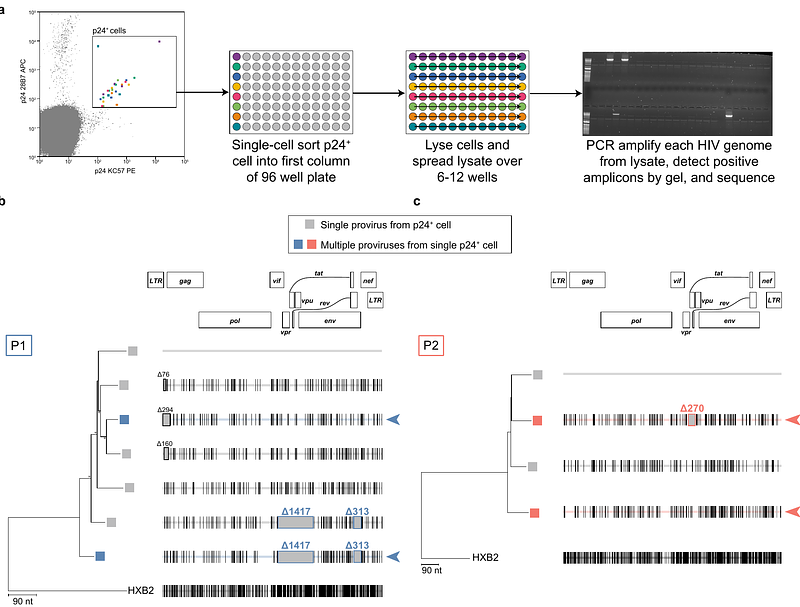Superinfection with intact HIV-1 results in conditional replication of defective proviruses and nonsuppressible viremia in people living with HIV-1

Superinfection with intact HIV-1 results in conditional replication of defective proviruses and nonsuppressible viremia in people living with HIV-1
Hariharan, V.; White, J. A.; Dragoni, F.; Fray, E. J.; Pathoulas, N.; Moskovljevic, M.; Zhang, H.; Singhal, A.; Lai, J.; Beg, S. A.; Scully, E. P.; Gilliams, E. A.; Block, D. S.; Keruly, J.; Moore, R. D.; Siliciano, J. D.; Simonetti, F. R.; Siliciano, R. F.
AbstractDuring replication of some RNA viruses, defective particles can spontaneously arise and interfere with wild-type (WT) virus replication. Recently, engineered versions of these defective interfering particles (DIPs) have been proposed as an HIV-1 therapeutic. However, DIPs have yet to be reported in people with HIV-1 (PWH). Here, we find DIPs in PWH who have a rare, polyclonal form of non-suppressible viremia (NSV). While antiretroviral therapy (ART) rapidly reduces viremia to undetectable levels, some individuals experience sustained viremia due to virus production from cell clones harboring intact or defective proviruses. We characterized the source of NSV in two PWH who never reached undetectable viral load despite ART adherence. Remarkably, in each participant, we found a diverse set of defective viral genomes all sharing the same fatal deletions. We found that this paradoxical accumulation of mutations by viruses with fatal defects was driven by superinfection with intact viruses, resulting in mobilization of defective genomes and accumulation of additional mutations during untreated infection. We show that these defective proviruses interfere with WT virus replication, conditionally replicate, and, in one case, have an R0 > 1, enabling in vivo spread. Despite this, clinical outcomes show no evidence of a beneficial effect of these DIPs.